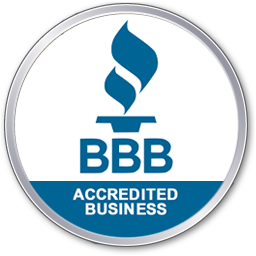If you live in the US, there’s a one in six chance that you live within three miles of a hazardous waste site. While that may not be an immediate concern, it certainly becomes one when you realize that these hazardous sites are so dangerous that they’ve been proposed or already approved for cleanup under the Superfund program.
And it so happens that most Americans live near these hazardous waste sites unknowingly. This is because some waste sites are clearly marked and visible, while others are more subtle in nature.
This is a cause for concern for both individual households and companies. Individuals have a cause for concern because many of these subtle waste sites are often places that have no supervision or signage to keep people out. One example would be abandoned industrial facilities.
Companies must be aware of the four categories of hazardous waste, or they can be penalized tens of millions of dollars, like in the incident with Walmart.
But what is it exactly, and what are the different types of hazardous waste?
What Is Hazardous Waste?
Hazardous waste is any type of waste that can be dangerous to human health or the environment. Some types of hazardous waste include contaminated liquids, explosives, radioactive materials, poisons, gases, and solid materials. The list also includes materials from industrial processes, medical treatments, hazardous chemical spills, agricultural activities, and more.
However, hazardous waste is broadly categorized into four categories:
- Listed wastes
- Characteristic wastes
- Mixed radiological wastes
- Mixed hazardous wastes
What to Do if You Find Yourself in a Hazardous Waste Situation
Plan Ahead
The first step to handling a hazardous waste situation is to plan ahead.
In many communities, the Local Emergency Planning Committee (LEPC) is responsible for collecting information on hazardous materials and devising emergency plans.
Once you have an idea of the hazardous exposure in your area, you can take it a step further by:
- Creating a personalized emergency plan
- Building a homemade emergency supply kit
- Know your ventilation system inside and out
- Pre-identify a safe room that’s above ground and has as little exposure to the outside as possible
Evacuate
If you find yourself in the middle of a hazardous materials situation, try to get more information from local television or radio stations.
This is especially important when hazardous materials can also include odorless toxic chemicals. If you’re asked to evacuate, do so immediately. Listen to the radio or television for additional information on where to evacuate, the proper routes, and procedures.
If you have prepared an emergency supply kit and have the time, shut all the windows and vents and turn off any fans.
Trapped Outdoors
If you’re outdoors when you find yourself in a hazardous materials situation, just remember the word “up.” Head upwind, uphill, and upstream for at least a half mile from the “danger zone.”
Additionally, avoid touching anything contaminated and cover your mouth with a mask or cloth and take shallow breaths.
If you’re stuck in a car, then immediately try to seek shelter if asked to stay inside. However, if you can’t find any shelter, then keep all the windows and vents close and turn off the ventilation system.
Staying Indoors
If the instructions ask everyone to stay indoors, be sure to immediately shut and lock all windows and exterior doors. Be sure to close all indoor openings, like vents, and seal any gaps around any area with access to outdoor air.
Some items you can use include plastic sheeting, duct tape, and wet towels. You’ll also want to immediately turn off your ventilation system or set it to 100 percent recirculation.
After Exposure
After experiencing a hazardous waste situation, be sure to continue to listen to local stations for the latest information and follow all decontamination instructions. Additionally, place any exposed clothing and materials into tightly sealed containers and advise everyone you’ve been in contact with of the hazardous waste exposure.
Keep a watchful eye and immediately report any lingering hazards to the local office. If you can’t go home right after the incident, the next best thing to do is head over to the nearest public shelter by texting SHELTER + your Zip code.
1.) Listed Wastes
Among the listed wastes category, there are four sub-categories that the hazardous wastes fall into—F-list, K-list, P-list, and U-list.
F-List
The F-list includes any hazardous waste that is produced from industrial and manufacturing processes but has an unidentified source.
Because F-list wastes come from nonspecific sources, they’re divided into the following categories instead:
- Multisource leachate
- Dioxin-bearing waste
- Wood-preserving waste
- Petroleum refinery wastewater treatment sludge
- Electroplating and metal finishing waste
- Chlorinated aliphatic hydrocarbons production
K-List
The K-list includes any hazardous from specific sources within the industry and manufacturing sectors. The industries that produce K-list waste include:
- Petroleum refining
- Pesticides manufacturing
- Organic chemicals manufacturing
- Veterinary pharmaceuticals manufacturing
- Wood preservation
- Explosives manufacturing
- Iron and steel production
- Inorganic pigment and chemicals manufacturing
- Ink formulation
- Coking
- Primary aluminum production
- Secondary lead processing
The EPA assigns a hazard code for each waste on F and K lists.
- T. Toxic
- H. Acute hazardous
- I. Ignitable
- C. Corrosive
- R. Reactive
- E. Toxicity characteristic
P and U-List
Both the P-list and the U-list are made up of unused but disposed of specific commercial chemical products. In order to be categorized as a P or U-list waste, the waste must:
- Contain one chemical on the P or U list
- Be unused
- Be in the commercial chemical product form
A commercial chemic product on these lists must be 100 percent pure, commercial grade or the only active ingredient in the formulation.
2.) Characteristic Wastes
Hazardous wastes that contain a property posing a significant threat to the environment are regulated as characteristic wastes. The four characteristics are ignitability, corrosivity, reactivity, and toxicity.
Ignitability
Hazardous waste with an ignitability characteristic are:
- Flammable waste
- Liquids with below 140°f flashpoints
- Compressed oxidizers and gases
- Flammable non-liquids
Corrosivity
Hazardous waste with a corrosivity characteristic includes:
- Acids and bases that cause rust and decomposition
- Any waste that can melt through steel materials
Reactivity
Reactivity hazardous waste includes:
- Waste that’s unstable under normal conditions
- Explosive waste
Toxicity
Toxicity hazardous waste is any:
- Waste that’s harmful when ingested or absorbed
- Waste that has the potential to escape from a landfill and pollute groundwater
3.) Mixed Radiological and 4. ) Hazardous Wastes
These two types of waste are usually clumped together. This is because mixed wastes are hazardous wastes that contain some form of radioactive material.
This type of waste is regulated under the Atomic Energy Act and the RCRA.
It’s split because the hazardous part of the waste is regulated by the EPA, while the radiological part is regulated by the Nuclear Regulatory Commission (NRC) or the Department of Energy (DOE).
The NRC is typically responsible for regulating commercial radiological waste and non-DOE facilities, while the DOE regulates waste generated from DOE facilities.
Final Thoughts
Hazardous wastes should never be taken lightly. It’s important to understand the different categories and types of hazardous waste to make smarter decisions for the environment. By understanding how to properly identify hazardous waste, you’re helping keep our planet safe from its harmful effects.
With years of experience serving Portland and the surrounding area, you can count on Alpha Environmental. Get in touch with our specialists for safe, worry-free hazardous waste transport and disposal.




